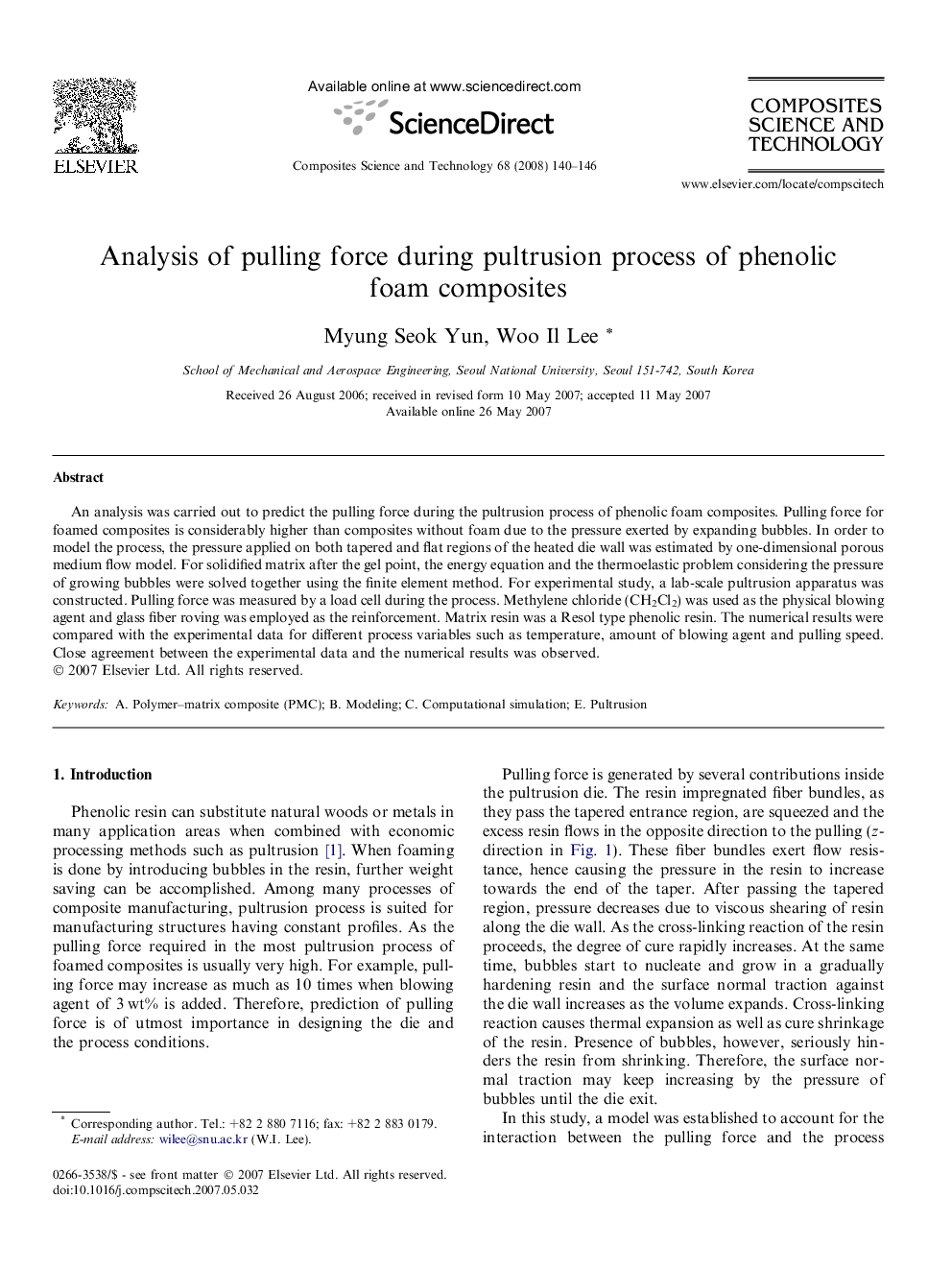| Article ID | Journal | Published Year | Pages | File Type |
|---|---|---|---|---|
| 822543 | Composites Science and Technology | 2008 | 7 Pages |
An analysis was carried out to predict the pulling force during the pultrusion process of phenolic foam composites. Pulling force for foamed composites is considerably higher than composites without foam due to the pressure exerted by expanding bubbles. In order to model the process, the pressure applied on both tapered and flat regions of the heated die wall was estimated by one-dimensional porous medium flow model. For solidified matrix after the gel point, the energy equation and the thermoelastic problem considering the pressure of growing bubbles were solved together using the finite element method. For experimental study, a lab-scale pultrusion apparatus was constructed. Pulling force was measured by a load cell during the process. Methylene chloride (CH2Cl2) was used as the physical blowing agent and glass fiber roving was employed as the reinforcement. Matrix resin was a Resol type phenolic resin. The numerical results were compared with the experimental data for different process variables such as temperature, amount of blowing agent and pulling speed. Close agreement between the experimental data and the numerical results was observed.
